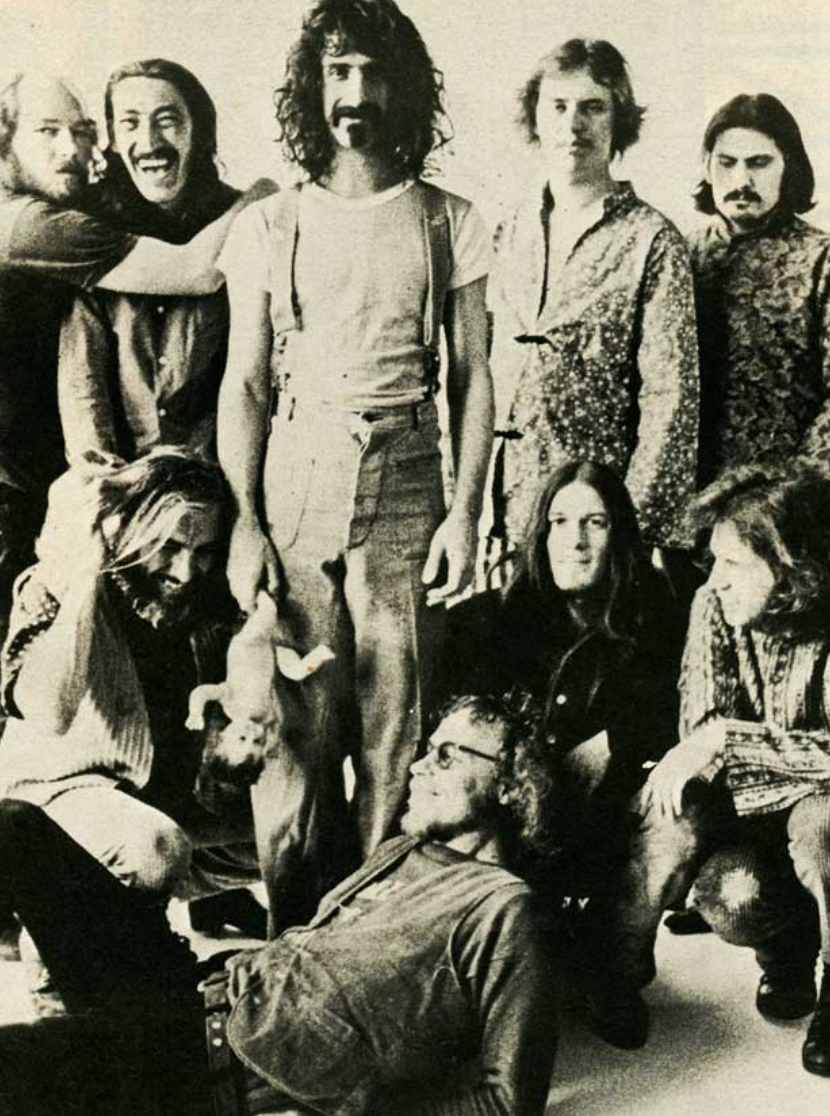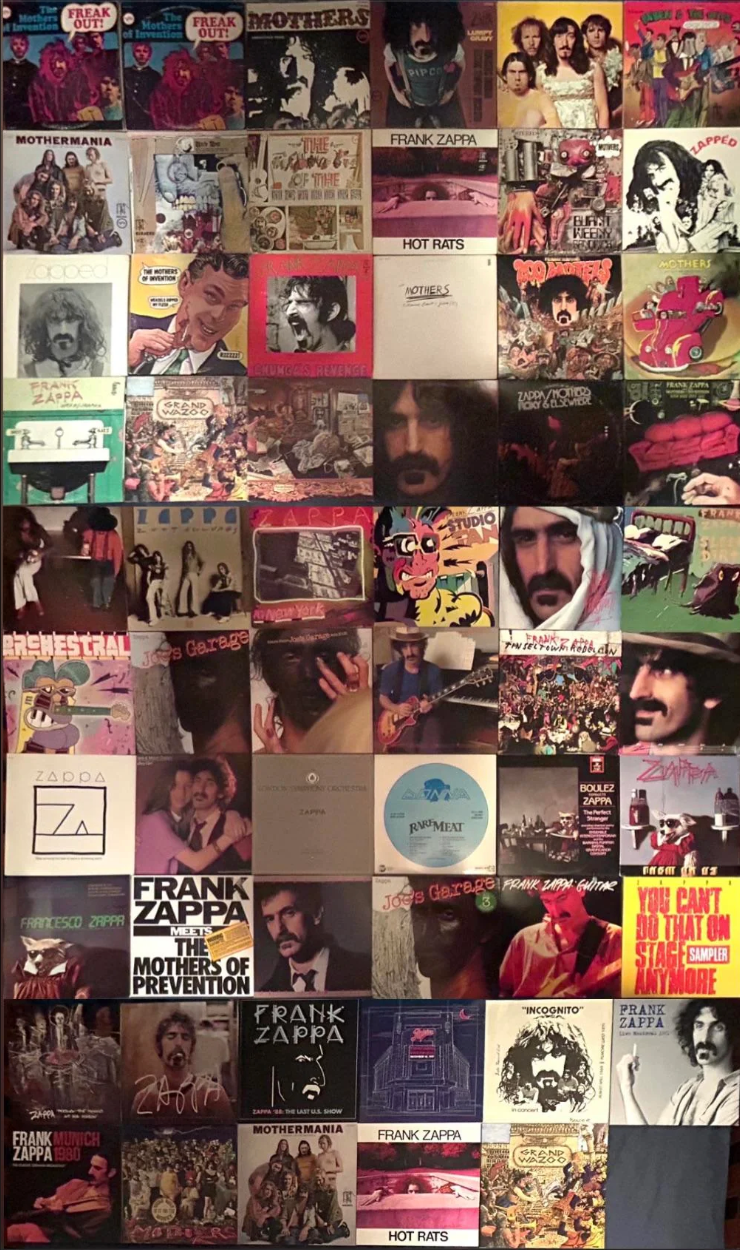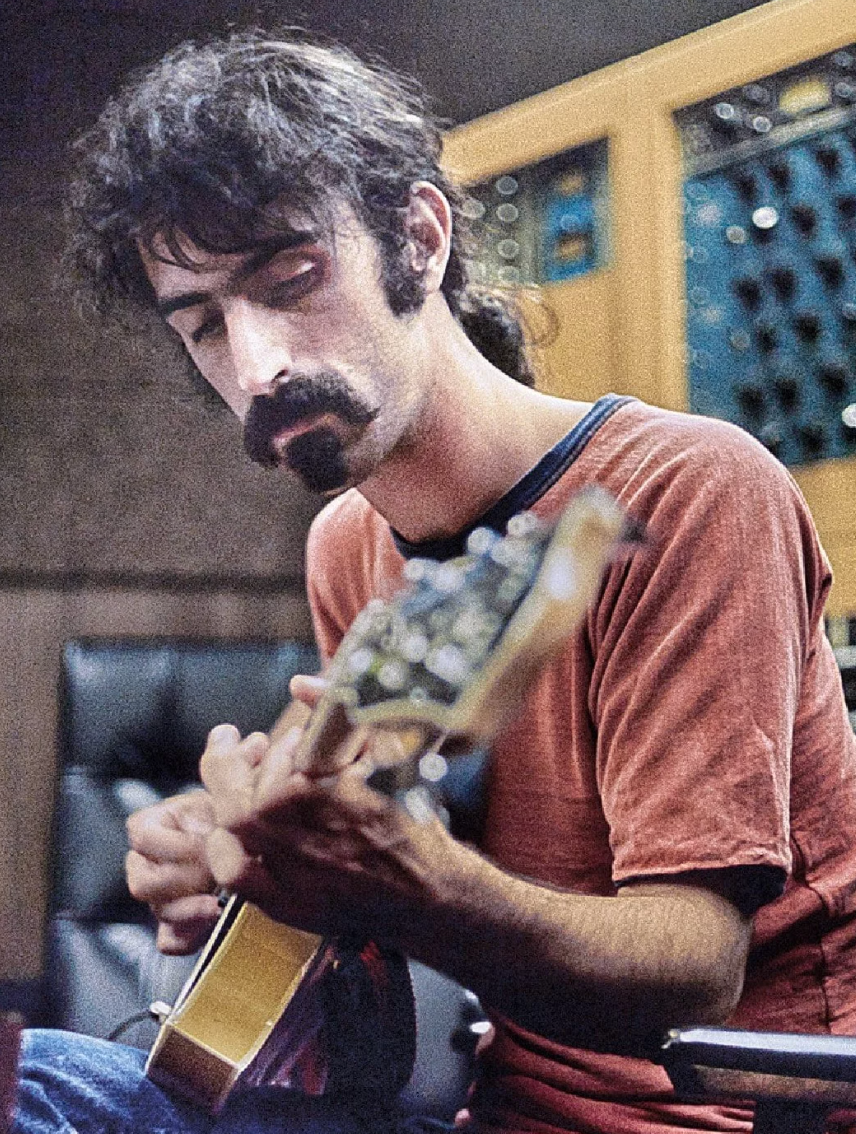Updated: Apr 2
Woody Allen’s journey from a Brooklyn kid to a rising stand-up comedian is a fascinating story of wit, determination, and sheer comedic brilliance.

Early Life & Beginnings
Born as Allan Stewart Konigsberg on December 1, 1935, in Brooklyn, New York, Woody Allen grew up in a Jewish family with a love for movies and humor. As a child, he was more interested in magic tricks and baseball than academics, but his natural ability to craft jokes emerged early.

At just 15 years old, he legally changed his name to Heywood "Woody" Allen, inspired by clarinetist Woody Herman. Around the same time, he began submitting jokes to local newspapers and radio shows, quickly making a name for himself as a comedy writer.

Breaking Into the Comedy Scene
By his late teens, Allen was writing jokes for newspaper columns and television shows, including The Ed Sullivan Show and The Tonight Show. His sharp, intellectual humor stood out, and he soon became one of the most sought-after young comedy writers in the industry.

In the late 1950s, he was hired by comedy legend Sid Caesar to write for Your Show of Shows, alongside legends like Mel Brooks and Neil Simon. However, despite his success as a writer, Allen wanted more—he wanted to perform his own material.

First Break into Stand-Up Comedy (1960s)
Allen’s transition into stand-up comedy happened in the early 1960s when he started performing at small clubs in Greenwich Village. Unlike the typical comedians of the era, who relied on punchlines and physical humor, Allen pioneered a new kind of stand-up—intellectual, self-deprecating, and neurotic.

His nervous, bookish persona, combined with rapid-fire delivery, made him a standout. He often spoke about existentialism, relationships, psychoanalysis, and his own insecurities, setting himself apart from mainstream comedians.

One of his earliest major gigs was at the Blue Angel nightclub in New York. His breakthrough came when he appeared on The Tonight Show with Johnny Carson and began getting national attention. His stand-up career skyrocketed, leading to comedy albums like Woody Allen (1964), which showcased his unique, observational humor.

The Leap to Film & Beyond
His success in stand-up paved the way for screenwriting and acting, leading to films like What’s New Pussycat? (1965) and his directorial debut with Take the Money and Run (1969). From there, he would go on to become one of the most influential filmmakers of all time.

The Rise of Woody Allen: From Stand-Up to Silver Screen
By the early 1960s, Woody Allen had made a name for himself in the smoky, intellectual comedy clubs of Greenwich Village.

His nervous, self-deprecating humor—filled with existential dread, relationship neuroses, and razor-sharp wit—set him apart from the era’s traditional comedians. But while he was quickly becoming a stand-up star, Allen had bigger ambitions. He wanted to write and create on his own terms, not just tell jokes in nightclubs.
Hollywood Calls: Writing for the Big Screen
Allen’s first brush with the film industry came in 1965 when he was hired to write the screenplay for What’s New Pussycat?, a madcap sex comedy starring Peter O’Toole, Peter Sellers, and Romy Schneider.

The film, about a womanizing writer who seeks help from a bizarre psychiatrist, was originally meant to be a light Hollywood romp, but with Allen’s touch, it became something entirely different—neurotic, absurd, and full of witty dialogue.
However, the experience was far from ideal for Allen. Hollywood producers rewrote much of his script, and Peter Sellers’ rising influence changed the film’s direction. Though it became a box-office hit, Allen walked away frustrated. If he was going to write movies, he needed full creative control.

The Accidental Star: Allen’s Screen Persona Takes Shape
Despite his frustrations, What’s New Pussycat? did something crucial—it introduced Woody Allen as a screen presence. His supporting role in the film as a neurotic side character resonated with audiences, and suddenly, he wasn’t just a behind-the-scenes writer. He was on screen, bringing his nervous intellectual persona to life.

Hollywood saw potential. Soon after, Allen was given another opportunity—but this time, it was something even stranger.
Rewriting the Past: What’s Up, Tiger Lily? (1966)
In a bold and unconventional move, Allen took a low-budget Japanese spy film (Kokusai himitsu keisatsu: Kagi no kagi) and completely rewrote the dialogue, dubbing it over with a ridiculous new storyline about spies searching for a secret egg salad recipe.

The result was What’s Up, Tiger Lily? (1966), a surreal, absurdist comedy that was entirely unique for its time. The film became a cult hit, proving that Allen’s humor could translate to cinema—but he still hadn’t made a film that was truly his own.

Directing His Own Films: Take the Money and Run (1969)
Frustrated by his lack of control, Allen finally made the leap to directing with Take the Money and Run (1969), a mockumentary about an incompetent criminal named Virgil Starkwell. Shot in a faux-documentary style, the film blended absurd humor with slapstick and clever satire—establishing the comedic style that would define his early career.
Unlike his previous Hollywood experiences, Take the Money and Run was all Woody Allen. He co-wrote, directed, and starred in the film, ensuring that his voice was intact. Though modestly budgeted, the film was a hit, winning over critics and audiences alike.

More importantly, it proved that Allen could handle full creative control, paving the way for what would become one of the most distinctive and celebrated careers in cinema.

The 1970s and the Road to Greatness
With Take the Money and Run, Woody Allen had arrived as a filmmaker. The 1970s would see him refine his style, shifting from pure slapstick to more sophisticated, character-driven comedies like Bananas (1971), Sleeper (1973), and Love and Death (1975).
And then, in 1977, he would create his masterpiece—Annie Hall, the film that changed romantic comedies forever and cemented his place in cinematic history.
The Evolution of Woody Allen: The 1970s and the Road to Mastery
By the dawn of the 1970s, Woody Allen had firmly established himself as a filmmaker. With the success of Take the Money and Run (1969), he proved that his distinctive blend of absurdity, satire, and neurotic humor could work in cinema. But while the film was a hit, it was still largely a slapstick-driven comedy. Allen, always restless and evolving, was about to refine his voice and take his place among the greats.

The Early 1970s: Gaining Momentum
Allen’s next few films followed a similar pattern—self-contained comedic adventures where he played variations of his neurotic, bumbling persona.

Bananas (1971) – A political satire in which Allen plays a New Yorker who unwittingly becomes the leader of a fictional Latin American revolution. The film was heavily influenced by Marx Brothers-style slapstick, but also showcased Allen’s growing interest in blending comedy with social commentary.

Everything You Always Wanted to Know About Sex (But Were Afraid to Ask) (1972) – A surreal, episodic comedy loosely based on a sex manual. It was raunchier than his previous work, featuring segments like Gene Wilder falling in love with a sheep.

Sleeper (1973) – A sci-fi satire about a health food store owner who wakes up 200 years in the future, only to find himself in a dystopian world ruled by a dictator. The film was one of his first major critical successes, showing his ability to mix slapstick with intellectual humor.

By this point, Woody Allen had become one of the most unique comedic filmmakers in Hollywood. But something was changing. His films, while still absurd, were becoming more sophisticated, with sharper writing and deeper character work. And then came Love and Death (1975)—a turning point.
Love and Death (1975): A Step Toward Greatness
Love and Death was Allen’s first real attempt at a more mature, literary comedy. A parody of Russian literature, it combined existential philosophy, historical satire, and slapstick humor. While still zany, it hinted at Allen’s growing ambition—he was starting to experiment with themes of love, mortality, and the human condition.

Critics noticed. Audiences responded. And Allen himself was ready for his next great leap.
1977: Annie Hall Changes Everything
Then came Annie Hall.
This was the film that transformed Woody Allen from a great comedian into one of cinema’s greatest auteurs. It wasn’t just a comedy—it was a deeply personal, semi-autobiographical exploration of love, memory, and relationships.

Allen played Alvy Singer, a neurotic comedian reflecting on his failed relationship with the charming but independent Annie Hall (played by Diane Keaton). The film broke new ground in storytelling:
Allen spoke directly to the audience.
Flashbacks blurred with reality.
Scenes played with time, memory, and perspective.
The humor was still there, but so was the emotional depth—for the first time, an Allen film made audiences laugh and cry.

Annie Hall won four Academy Awards, including Best Picture, Best Director, Best Actress (Diane Keaton), and Best Original Screenplay. It also beat Star Wars for the top Oscar—an astonishing feat.
This film redefined the romantic comedy genre and solidified Woody Allen as a filmmaker with profound insight into human relationships.

1978-1979: The Bergman Influence & Manhattan
After Annie Hall, Allen moved even further into serious filmmaking. He became heavily influenced by Swedish director Ingmar Bergman, known for his existential dramas about life and death. This influence was seen in:

Interiors (1978) – A stark, serious drama with no comedy at all—Allen’s first full attempt at high art.

Manhattan (1979) – A stunningly shot-in-black-and-white love letter to New York City, blending romance, nostalgia, and jazz. It became one of his most beloved films, despite its controversial age-gap romance subplot.

By the end of the 1970s, Woody Allen had completely transformed. No longer just a comedian, he was now one of the most respected filmmakers of his generation—balancing humor with deep explorations of love, philosophy, and the human psyche.

Woody Allen in the 1980s: The Era of Experimentation and Mastery
By the time the 1980s arrived, Woody Allen had already cemented himself as one of the most unique voices in American cinema. He had mastered comedy, revolutionized the romantic comedy genre with Annie Hall (1977), and proven his ability to craft serious drama with Interiors (1978).
But rather than settle into one style, Allen spent the 1980s experimenting—sometimes leaning into his Bergman-inspired dramatic side, other times returning to his comedic roots, often blending the two. This decade would be one of his richest, most diverse creative periods.
1980–1982: Searching for Balance
Allen started the decade on a reflective note, oscillating between comedy and introspection.
Stardust Memories (1980) – A deeply personal and highly stylized film, Stardust Memories was Allen’s take on Federico Fellini’s 8½, following a filmmaker grappling with fame, artistic dissatisfaction, and his own mortality. While visually stunning, its cynical tone alienated some audiences.

A Midsummer Night’s Sex Comedy (1982) – A light, whimsical comedy set in the early 20th century, borrowing themes from Ingmar Bergman’s Smiles of a Summer Night. It marked the first collaboration between Allen and Mia Farrow, who would become his muse (both on-screen and off) for the next decade.
While these films were important stepping stones, his true masterpieces of the decade were just around the corner.

1983–1986: The Artistic Peak
This period saw Allen reaching new artistic heights, blending humor, drama, and philosophy in ways that had never been done before.

Zelig (1983) – A mockumentary about Leonard Zelig, a man who mysteriously changes his appearance and personality to fit in with those around him. Through stunning technical innovation, Allen inserted himself into historical footage decades before CGI made it commonplace. Zelig was a satirical look at identity, conformity, and media culture, showcasing Allen’s ability to innovate.
Broadway Danny Rose (1984) – A touching and bittersweet comedy about a down-on-his-luck talent manager navigating New York’s entertainment scene. Shot in black-and-white, the film had a nostalgic warmth that endeared it to critics.
The Purple Rose of Cairo (1985) – One of Allen’s most imaginative films, it told the story of a lonely woman (Mia Farrow) who falls in love with a movie character who literally steps off the screen. Mixing fantasy, romance, and heartbreak, the film was a meditation on the escapism of cinema and earned Allen some of the best reviews of his career.

Hannah and Her Sisters (1986) – A deeply human, interwoven drama about love, infidelity, and family. Starring Mia Farrow, Michael Caine, and Dianne Wiest, it became one of his biggest box office hits and won three Academy Awards, including Best Original Screenplay for Allen.

This era solidified Allen’s ability to blend comedy with profound emotional depth. He was no longer just a comedic filmmaker—he was a true storyteller of the human experience.
1987–1989: Pushing Dramatic Boundaries
As the decade drew to a close, Allen continued to refine his storytelling, fully embracing his dramatic side.
Radio Days (1987) – A nostalgic, semi-autobiographical love letter to Allen’s childhood and the golden age of radio. Full of warmth, humor, and sentimentality, the film was a departure from his usual cynicism.

September (1987) – A completely serious chamber drama in the style of Bergman and Chekhov. Set in a single house with a small group of characters, it was an intense, dialogue-driven character study—though not as well received as his other films.
Another Woman (1988) – One of Allen’s most purely dramatic films, telling the story of a woman confronting her life’s regrets. While critically respected, it was clear that audiences preferred his blend of comedy and drama over pure melancholy.

Crimes and Misdemeanors (1989) – One of Allen’s greatest achievements, the film was a philosophical masterpiece that wove together two storylines—one a moral drama about a man contemplating murder, the other a light romantic comedy. Exploring themes of guilt, morality, and the existence of God, it was both haunting and hilarious.

Legacy of the 1980s
By the end of the decade, Woody Allen had proven himself more than just a comedic filmmaker—he was one of the most introspective and daring directors of his generation. His ability to mix humor, drama, fantasy, and philosophy made his work unparalleled in Hollywood.
Woody Allen: The Final Acts of a Cinematic Maverick (1990s–Present)
As the 1990s dawned, Woody Allen stood atop the cinematic world as one of the most respected and prolific filmmakers of his time. He had revolutionized romantic comedies with Annie Hall, redefined neurotic humor in film, and crafted deeply philosophical dramas that blurred the line between comedy and tragedy.
Unlike many filmmakers who burn out or fade into repetition, Allen continued evolving, challenging himself, and creating at a relentless pace.
But the 1990s would also test him like never before—both professionally and personally. And yet, against all odds, he endured. His legacy, love for storytelling, and commitment to his craft remained unshakable.
1990s: A Decade of Darkness and Defiance
The decade began with a controversial storm. His highly publicized personal life exploded in the media, nearly derailing his career entirely.

In 1992, allegations of misconduct surfaced, leading to an ugly legal battle between Allen and Mia Farrow. The scandal dominated headlines and divided Hollywood, yet Allen refused to be defined by it. He did what he had always done—he kept making movies.
Key Films of the 1990s:
Husbands and Wives (1992) – A brutally honest, emotionally raw film about crumbling relationships. The film eerily mirrored his own personal troubles, creating an uncomfortable yet powerful cinematic experience.
Manhattan Murder Mystery (1993) – A return to lighthearted comedy, reuniting him with Diane Keaton. It was a reminder that despite his personal turmoil, Allen still had his comedic magic.
Bullets Over Broadway (1994) – A brilliant satire of the theater world, earning him another Oscar for Best Original Screenplay. It showcased his continued mastery of witty dialogue and character-driven storytelling.
Mighty Aphrodite (1995) – Featuring Mira Sorvino in an Oscar-winning performance, this film mixed Greek mythology with modern New York neuroses.
Deconstructing Harry (1997) – A brutally self-reflective film where Allen attacked his own public persona, showcasing a fictional writer plagued by self-doubt, scandal, and controversy.
Despite being blacklisted by parts of Hollywood, Allen never stopped. He doubled down on what made him great—deep, meaningful storytelling intertwined with humor and existential philosophy.
2000s: The European Renaissance
With Hollywood growing increasingly wary of his personal controversies, Allen turned his creative gaze overseas. He left behind the neurotic intellectuals of New York and embarked on a European filmmaking renaissance, delivering some of his most visually stunning and thematically rich films in decades.
Key Films of the 2000s:
Match Point (2005) – A dark, Hitchcockian thriller that explored themes of fate, luck, and moral corruption. It was unlike anything Allen had made before and proved he could still reinvent himself.
Vicky Cristina Barcelona (2008) – A sultry, sun-drenched romance set in Spain, starring Penélope Cruz, Javier Bardem, and Scarlett Johansson. It won Cruz an Oscar and became one of his most commercially successful films in years.
This period solidified Allen’s ability to transcend eras, styles, and even continents. He was no longer just an American filmmaker—he had become a truly global storyteller.
2010s: The Grandmaster’s Last Hurrah
As he entered his late 70s and 80s, most would expect Allen to slow down. But instead, he doubled his creative output, churning out a film nearly every single year—a feat that no other living filmmaker of his stature has accomplished.
Key Films of the 2010s:
Midnight in Paris (2011) – A magical, time-traveling masterpiece about nostalgia, creativity, and the illusion of a "golden age." Starring Owen Wilson as a stand-in for Allen, the film became his biggest box-office hit ever, earning him another Oscar for Best Original Screenplay.
Blue Jasmine (2013) – A stunning drama starring Cate Blanchett, who won an Academy Award for Best Actress. The film explored themes of mental illness, class disparity, and the illusions we create to survive.
Even in his later years, Allen continued to produce intelligent, thought-provoking films. While his public image remained divisive, his artistic voice never wavered.
2020s: The Last Act?
Now in his late 80s, Allen remains active, still directing, still writing, still pushing forward. His recent films, such as Rifkin’s Festival (2020), may not have the same cultural impact as Annie Hall or Manhattan, but they serve as a reminder that his passion for storytelling has never faded.
Woody Allen’s Legacy: What He Did That No One Else Ever Will
1. Relentless Creative OutputAllen has directed over 50 films in his career, often writing, directing, and starring in them himself. Few filmmakers—if any—have maintained such a consistent level of output and quality for six decades.
2. Blending Comedy and Philosophy Like No One ElseNo other filmmaker has been able to seamlessly merge deep existential themes with side-splitting humor the way Allen has. His films aren’t just funny—they are introspective, intellectual, and deeply human.
3. Reinventing the Romantic ComedyWithout Annie Hall, the modern romantic comedy as we know it wouldn’t exist. He redefined how relationships are portrayed in film, influencing generations of filmmakers from Noah Baumbach to Wes Anderson to Greta Gerwig.
4. Pioneering the Neurotic, Intellectual ProtagonistThe character of the anxious, neurotic, overthinking intellectual is now a staple of modern cinema and TV (think Curb Your Enthusiasm, Seinfeld, Louie). But no one did it before Woody.
5. Turning New York City into a Cinematic CharacterJust as Fellini immortalized Rome and Truffaut captured Paris, Allen turned New York into a living, breathing character in his films. His depictions of the city in Manhattan, Annie Hall, and Hannah and Her Sisters remain some of the most iconic in film history.
6. Surviving and Creating Despite ControversyFew filmmakers have been as publicly vilified as Allen. And yet, unlike others who faded into obscurity, he never stopped creating. His commitment to his craft, despite personal and professional exile, is something no other filmmaker has experienced—and never will.
The Man Who Kept Making Movies
Woody Allen’s legacy is as complex as the characters he writes. Some see him as a comedic genius, a cinematic philosopher, and one of the greatest filmmakers of all time.
Others see him as a controversial figure whose personal life overshadowed his work.
But one thing is undeniable:No other filmmaker, comedian, or writer has created such an extensive, intelligent, and enduring body of work. And no one ever will.

He is, and will always be, one of a kind.





















































































%20NEW-03.png)







